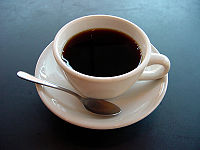Drug

A drug is any biological substance, synthetic or non-synthetic, that is taken primarily for non-dietary needs. It is usually synthesized outside an organism, but introduced into an organism to produce its action. That is, when taken into the organism's body, it will produce some effects or alter some bodily functions (such as relieving symptoms, curing diseases or used as preventive medicine or any other purposes).
To many people the word "drug" primarily means "illegal recreational drugs".
Note that natural endogenous biochemicals (such as hormones) can bind to the same receptor in the cell, producing the same effect as a drug. Thus, drug is merely an artificial definition that distinguishes whether that molecule is synthesized within an organism or outside an organism. For instance, insulin is a hormone that is synthesized in the pancreas, but if it is introduced into the body from outside it is considered as a drug.
It is a substance which is not food,[1] and which, when ingested, affects the functioning of the mind, or the body, or both. However, under the philosophy of Chinese medicine, food is also considered a drug as it affects particular parts of body and cures some diseases. Thus, food does satisfy the above definition of drug so long as ingestion of it would alter some bodily functions.
Medication
A medication is a drug taken to cure and reduce any symptoms of an illness or medical condition, or may be used as preventive medicine that has future benefits but does not treat any existing or pre-existing diseases or symptoms. Dispensing of medication is often regulated by the government into three categories — over the counter (OTC) medications, which are available in pharmacies and supermarket's without special restrictions, behind the counter (BTC), which are dispensed by a pharmacist without needing a doctor's prescription, and Prescription only medicines (POM), which must be prescribed by a licensed medical professional, usually a physician.
Most OTC medications are generally considered to be safe enough that most people will not hurt themselves if they are taken as instructed. In the UK, BTC medicine is called pharmacy medicines which can only be sold in registered pharmacies, by or under the supervision of a pharmacist. However, the precise distinction between OTC and prescription depends on the legal jurisdiction.
Medications are typically produced by pharmaceutical companies and are often patented to protect their exclusive rights to produce them, but they can also be derived from naturally occurring substance in plants called herbal medicine. Those that are not patented (or with expired patents) are called generic drugs since they can be produced by other companies without restrictions or licenses from the patent holder.
Drugs, both medications and recreational can be administered in a number of ways,
- Orally, as a liquid or solid (pill), that is absorbed through the gut.
- Inhaled, as a vapour.
- Injected as a liquid either intramuscular or intravenous.
- Rectally as a pill, that is absorbed by the colon.
- Bolus, a substance into the stomach to dissolve slowly.
Many drugs can be administered in a variety of ways.
Recreational drugs
Recreational drug use is the use of psychoactive drugs for recreational purposes rather than for work, medical or spiritual purposes. Much controversy has arisen over recreational drug use, and governments across the world have regulated the consumption and/or distribution of drugs in the name of fighting drug abuse, but many countries' laws are criticized for being passed under ulterior motives or for being hypocritical. This seems to be changing, slowly, as Canada follows Amsterdam's lead and largely decriminalizes marijuanna.
Drugs as status symbols
In most cultures, drugs are often seen as status symbols. This is true for both ancient and modern cultures. A good example of this is in ancient Egyptian culture, in which gods were commonly pictured holding hallucinogenic plants. Another good example of this is in modern secondary schools, where teenagers often boast about their drug use, be it real or not.
List of drugs
See list of drugs for an alphabetical list of drugs by name. Many drugs have more than one name and, therefore, the same drug may be listed more than once. Brand names and generic names are differentiated by the use of capital initials for the former. Some drugs may have slang names and may need to be accessed using those names.
Footnotes
- ↑ Some substances, such as beer, wine, and some fungi, are sometimes regarded as both foods and drugs
External links
- The Cult of Pharmacology: How America Became the World's Most Troubled Drug Culture by Richard DeGrandpre, Duke University Press, 2006.